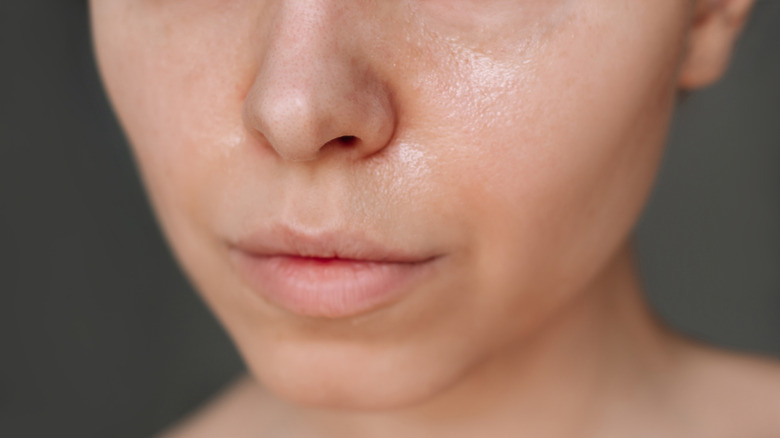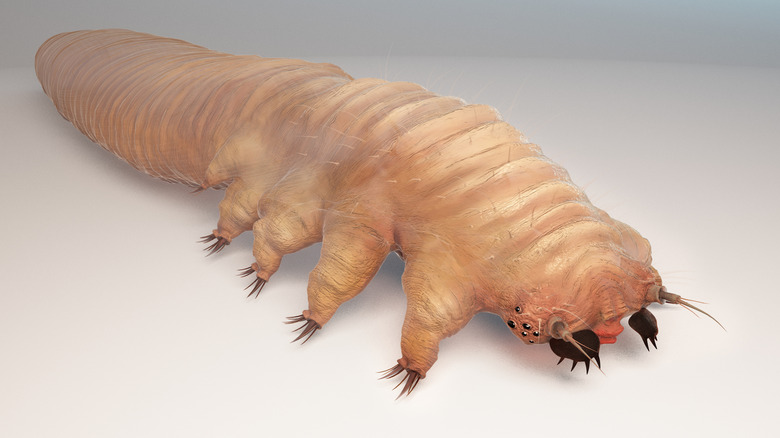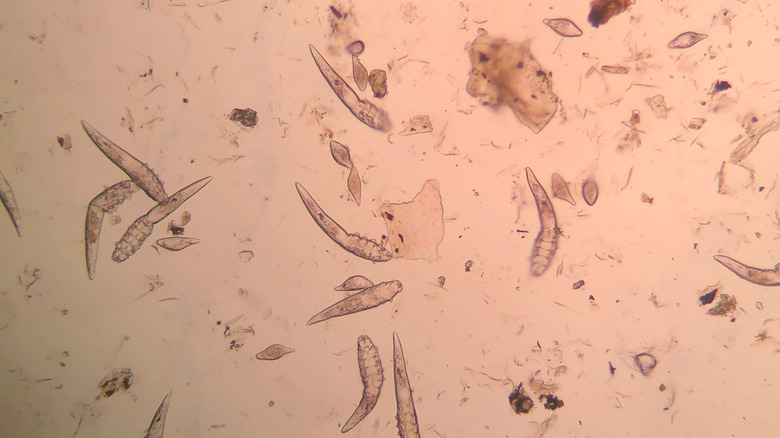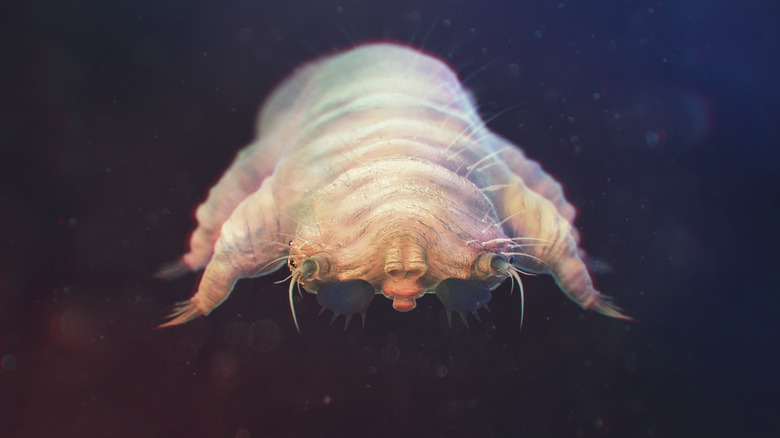There Are Creatures On Your Face Right Now And You Never Realized It
If microscopes have taught us anything, it's that there are entire worlds right under our noses that we would otherwise have no idea about. For instance, nature's most indestructible organism, the tardigrade, is a microscopic animal that has lived on Earth for roughly 600 million years, and yet its story has played out completely out of view of the human eye.
Just as incredible but infinitely more unsettling is the fact that we, ourselves, are actually covered in microscopic bugs called microbes, which live on just about every part of our bodies you can imagine, even in our eyes. Thankfully, most of these microbes are actually beneficial, helping with digestion, preventing infections, and even — in the case of Staphylococcus epidermidis — helping protect our skin from water loss and damage.
There is also another type of skin microbe that lives on us for their entire life cycles, feeding off our dead skin cells before dying out. But these microscopic mites, known as Demodex folliculorum, aren't actually as terrifying as they sound.
The tiny mites that live (and mate) on our faces
Believe it or not, we actually have more microbes living on us than we have cells. In fact, microbes dwarf our own cells by a factor of 10 to one. What's more, there are more than 10,000 different species living on and in our bodies, and our skin is home to around a thousand species of microbes. Luckily, most of these are actually good for us, and not just because they help fight off infections.
Demodex folliculorum is one example. Though it isn't necessarily the most beneficial of all the miniscule creatures that call our skin home, this type of mite does at least clear out dead cells, helping to keep skin clean. The downside is that we all have to live with the knowledge that we have miniscule mites crawling all over our faces at all times.
Yes, these particular microbes have made a home of all our faces, and according to the Cleveland Clinic, they have a particular proclivity for hanging out on our cheeks, eyelashes, foreheads, outside our ear canals, and on the sides of our noses. Even more upsetting is the fact that the mites are mostly nestled inside our pores but crawl across the surface of our skin at night to mate, before laying their eggs in our pores. Oh, and no amount of scrubbing will get these tiny creatures off — but considering they eat our dead skin cells, that's probably a good thing.
Demodex mites under a microscope
There are actually two types of Demodex mites: Demodex folliculorum, which live in smaller hair follicles and eat skin cells, and Demodex brevis, which live close to oil glands and eat the sebum produced by those oil glands. Both of these are known as face mites, and both are microscopic, measuring just 0.15 to 0.4 millimeters.
Thanks to microscopes, we have a good idea of what Demodex folliculorum look like, too. The translucent mites are actually some of the smallest arthropods in existence, which means they are invertebrates with jointed legs, much like crustaceans or insects. Yes, we are basically covered in skin insects. The Demodex folliculorum have a segmented body that is divided into two sections, both of which are covered with scales to help the creatures latch on to hair follicles. The head section features a mouth and eight legs, with the rest of the creature made up of what looks like a long, chubby tail.
If you're recoiling at the thought of these parasitic mites dragging their podgy tails across our faces 24 hours a day, there's no real need to worry. Typically, Demodex folliculorum don't have any adverse effects for humans, although having too many of them can result in a skin condition called demodicosis that can cause itchiness, redness, and irritation.
Demodex mites don't live long but are always with us
If you're not already unsettled by the idea of Demodex mites, there are plenty more upsetting details about this microscopic creature. As a study published in the Indian Journal of Dermatology states, though the mites prefer our faces, they can also be found on the "penis, mons veneris, buttocks, and in the ectopic sebaceous glands in the buccal mucosa" — otherwise known as the inside of our cheeks and lips. That's right, these things could well be crawling around on our lips, too.
Still feel relatively comfortable with the idea of being covered in tiny mites? Well, the Indian Journal of Dermatology is here to put a swift stop to that with its description of both male and females being in possession of "a genital opening." Once the arthropods make use of these genital holes and mating is complete, the females produce larvae, which hatch after three or four days and become adults in about a week. In all, a single Demodex mite has a life cycle of several weeks, and once they die, they decompose inside our hair follicles and sebaceous glands. But with so many of them on our bodies, we're never without a healthy covering of these microbes.
Demodex mites aren't all bad
Though we have no choice but to remain covered in Demodex mites, it's not all genital holes and decomposing bodies. Beyond just eating our dead skin cells, these tiny creatures might have other benefits. As the Indian Journal of Dermatology study points out, the mites are known to contain immune-reactive lipase, an enzyme that could help defend our skin against pathogenic bacteria, including Staphylococcus aureus and Streptococcus pyogenes.
If you're still not quite convinced we need these parasites crawling across our faces all night, perhaps reframing the Demodex mites as being like our tiny little children might help. A 2022 paper in Molecular Biology and Evolution presented the idea that Demodex folliculorum "represents a transitional stage from a host-injuring obligate parasite to an obligate symbiont." This means there is mutual dependence between us and these miniscule arthropods. In other words, Demodex folliculorum not only couldn't survive without our skin, they also help us out in many ways. So, the next time you have an intrusive thought about the number of tiny creatures mating across your face, remember that we and the Demodex are, in a sense, one.




